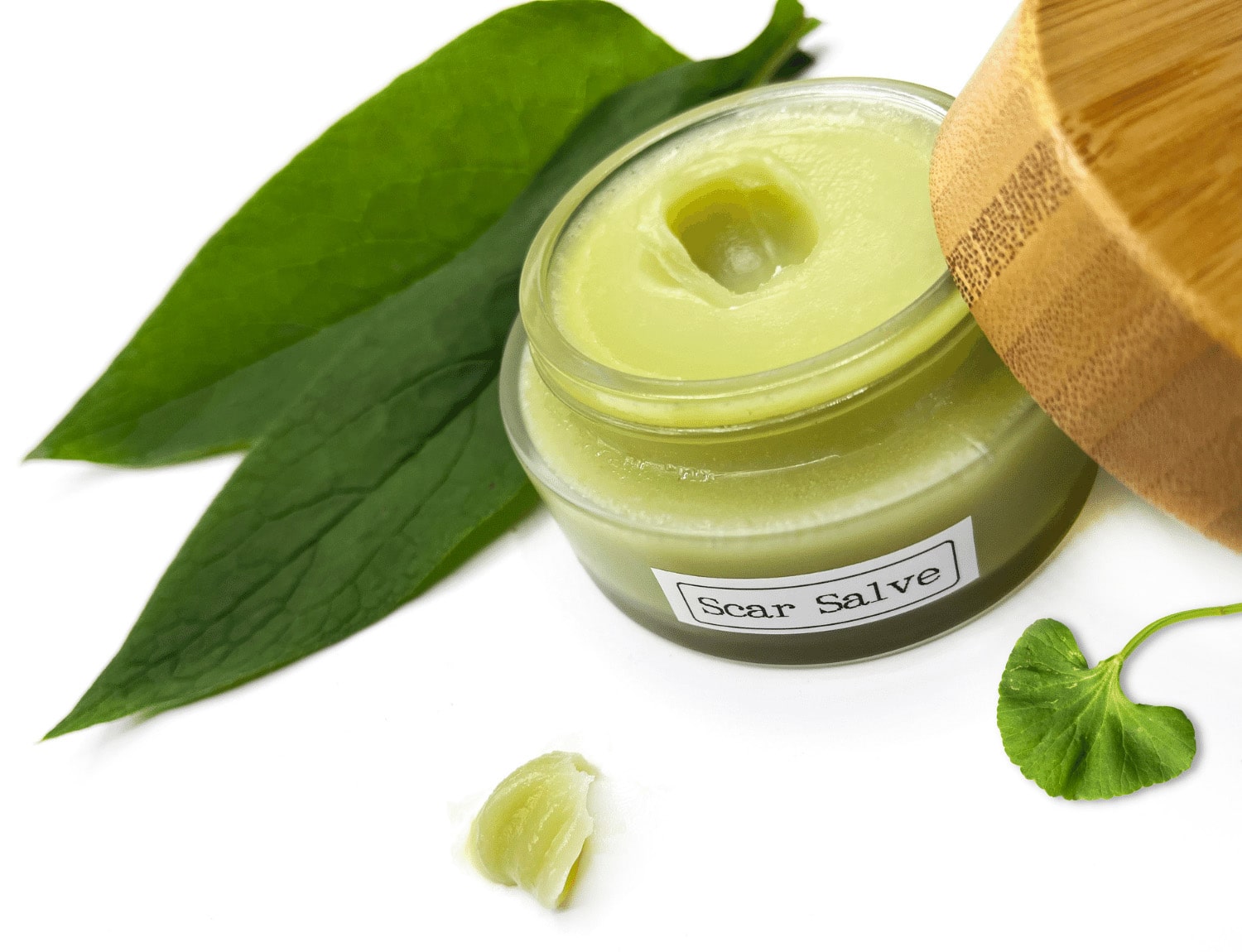It’s hard to believe we just passed the midway point of 2022.
Mr. Redheaded Herbalist had surgery in mid February and again in April. Recovery has been a long road, but he’s finally beginning to feel like his “old self” again.
Suffice to say, the first half of the year was a bit of blur for us.
Recently, Mr. RH asked me if I would make him something that would help his scar to finish healing and to (hopefully) look better when it’s done.
I kinda live for projects like this, and immediately consulted my books. The first herb that came to mind was comfrey which, coincidentally, I also use in my “Healthy Aging” serum.
It’s actually not a coincidence that many of the same herbs that are beneficial for keeping aging skin healthy and happy are also useful for healing wounds and minimizing scarring —
it’s all about skin repair! ♥
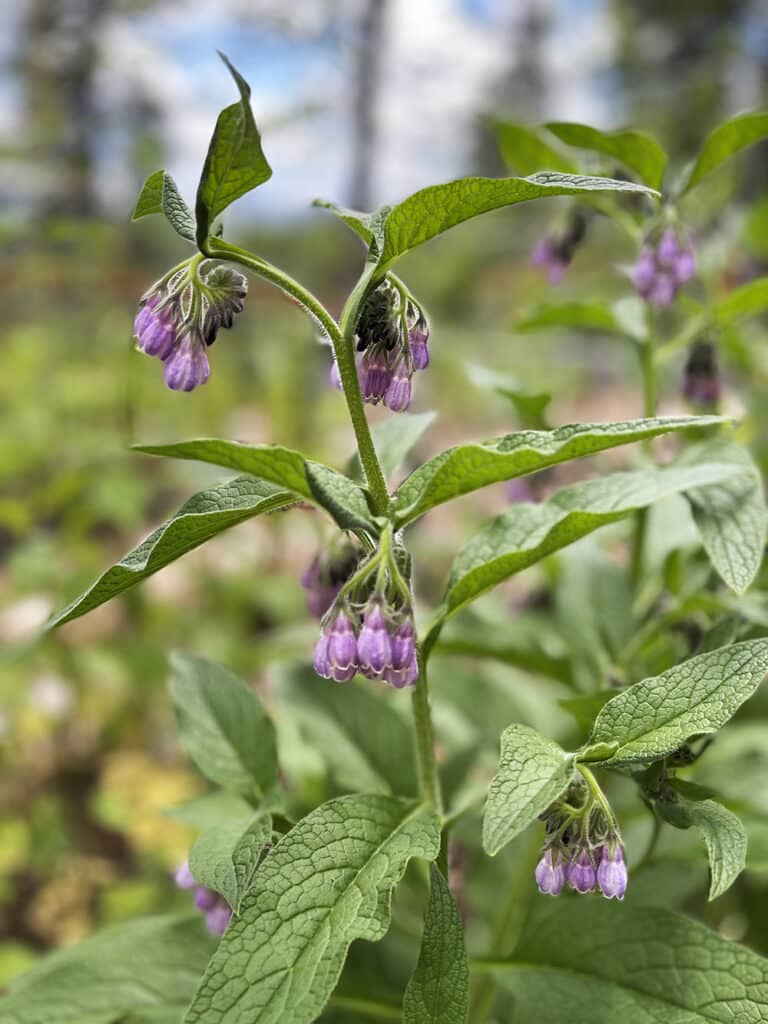
Comfrey
Symphytum officinale is famous as a healer of wounds and a knitter of skin and bones. Symphytum is derived from the Greek symphyo meaning to “make grow together.”
It can also help to foster proper post-surgical scar formation and prevent keloids.
How does it do this? Comfrey is a cell proliferant, meaning it promotes cell regeneration aka granulation. (We heard that word a LOT from Mr. Redheaded Herbalist’s surgeon and wound care nurse the last several months.)
Allantoin is the chemical constituent credited with comfrey’s cell rejuvenating, tissue repairing actions, yet studies comparing the whole plant extract against isolated allantoin tell a slightly different story. There is clearly something synergistic going on within the whole comfrey plant that is missing in the allantoin isolate.
Mother Nature knows what she’s doing! ♥
The majority of comfrey’s allantoin is concentrated in the root, so that is what I used for this preparation. Allantoin is primarily water-soluble and not significantly oil-soluble, though, so in order to ensure some of it is getting into your oils, your best best is to do an alcohol intermediary oil infusion to capture some of comfrey’s water and alcohol soluble constituents.
I also infused my honey with comfrey root, which does a great job of extracting comfrey’s healing (and water soluble) allantoin, tannins and mucilage.
Note that comfrey should never be used on deep, open incisions. Comfrey is so effective at what it does, it can actually cause the exterior of the wound to close up before the interior has healed, potentially creating an abscess and trapping bacteria and infection inside.
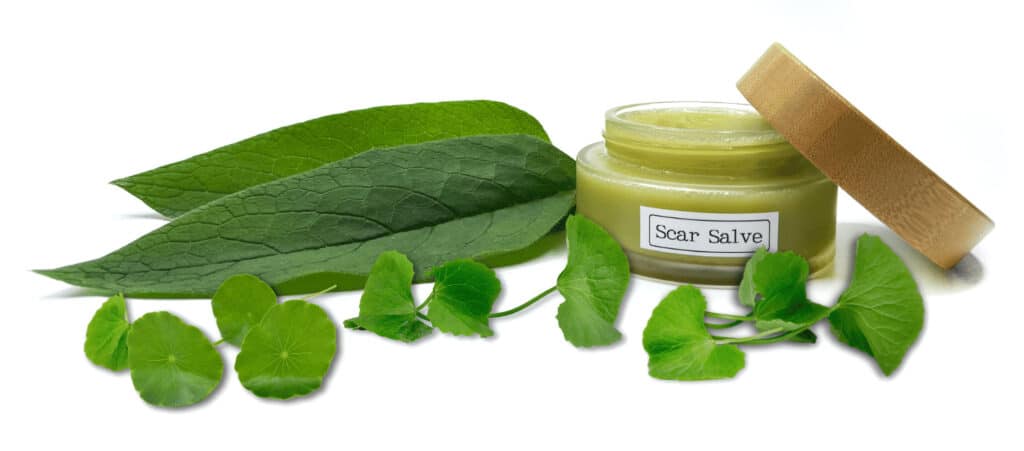
Gotu kola
According to the Doctrine of Signatures, form follows function and gotu kola is no exception. The leaf of Centella asiatica resembles a cerebellum/brain, hinting at its common use as a nootropic (i.e. an herb for the brain). It’s literally brain food.
Gotu kola has a long history of use in Ayurvedic medicine and traditional Chinese medicine (TCM), particularly for its ability to improve brain function and enhance memory and focus. Some claim that taking gotu kola can improve intelligence, ward off dementia and even increase longevity.
Topical gotu kola has been shown to boost collagen and improve the appearance of aging skin, which is why it’s included in my “Healthy Aging” serum formula.
But wait… there’s MORE!
Gotu kola also aids in wound healing and the proper formation of topical scars.
A research article published in the International Journal of Cancer Research found that triterpenoids in gotu kola — particularly the triterpene glycoside asiaticoside — can increase skin elasticity, boost antioxidant activity and increase blood supply to the wound site. It is also effective at preventing the overproduction of scar tissue (aka keloids).
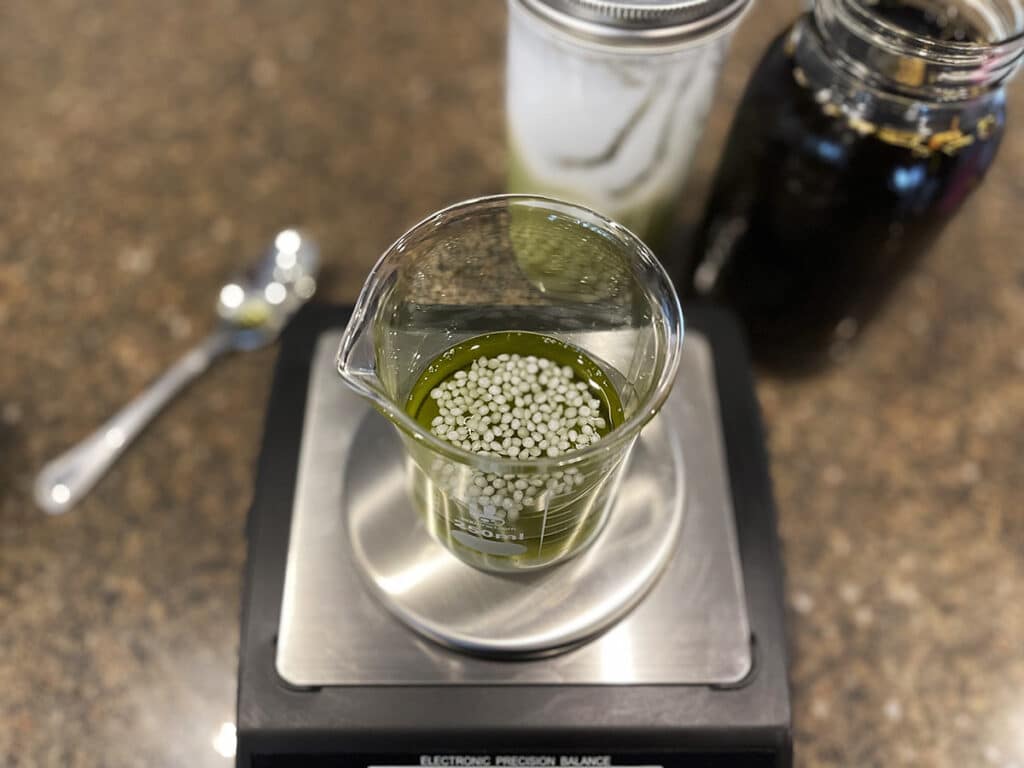
Tallow
It is my experience that no plant-based oil can top tallow in its unique ability to nourish and heal the skin. For that reason, most (all?) of my salves are tallow-based.
In addition to being biologically similar to our natural skin oils, tallow contains an abundance of the fat-soluble vitamins A, D, K, and E, which are found together only in animal fats. Tallow also contains large amounts of CLA (conjugated linoleic acid), an essential fatty acid with antimicrobial and anti-inflammatory properties. The stearic acid in tallow helps to repair skin, improving its flexibility and lipid barrier function and generally creating an environment for skin to knit and heal.
In fact, tallow was part of our traditional skincare tool kit long before its modern renaissance. In a book published in 1866, Dr. Chase’s Recipes, Or, Information For Everybody: An Invaluable Collection Of About Eight Hundred Practical Recipes, Alvin Wood Chase wrote about using tallow to make healing salves.
Honey
Honey is another traditional therapy that has been used for thousands of years to heal all kinds of wounds and burns. Honey (particularly manuka honey) is well studied for its antibacterial, immunostimulatory, anti-inflammatory and debriding actions that make it an excellent biologic wound dressing to expedite healing and minimize scarring.
It’s also yet another menstruum in which to infuse your botanicals, readily capturing water soluble constituents from the comfrey root, such as allantoin.
ALL the things.
You can easily infuse gotu kola into honey by gently warming your raw honey (stay beneath 110F to preserve the beneficial enzymes) until it’s runny and pourable. Fill a glass jar full of (wilted overnight) fresh herb or half-full of dried herb, and fill the jar the rest of the way with honey. Place the jar in a warm location such as a sunny windowsill, turning the jar on its head once a day. You could also speed things up a little by applying a little gentle heat using an Instant Pot on the yogurt setting or a dehydrator cabinet with the shelves removed and set to 90-110F.
How long the honey infuses is up to you. For culinary purposes, you would simply taste the honey and call it ‘done’ when you like the flavor. For therapeutic purposes, however, it’s best to strive for the strongest infusion you can get, so that means a longer infusion, up to 3-4 weeks.
When the time is up, gentle heat the honey to just under 110F again, and strain out the plant matter using a fine mesh strainer or colander.
Putting it all together
Since honey is water based, it requires an emulsifier to combine with the oils. Cera bellina wax is a modified beeswax with emulsifying properties that will allow us to incorporate a small amount of honey into the salve.
I purposely made this salve on the softer side, so it resembles more of an ointment. You can make a firmer salve by increasing the wax to 9 or 10 grams.
Refer to Making Herbal Oil Infusions if you need a refresher on infusing botanicals into oil. For the strongest medicine, an alcohol intermediary oil infusion is your best bet for stronger (and faster!) results, capturing more of the comfrey root and gotu kola’s water and alcohol soluble constituents.
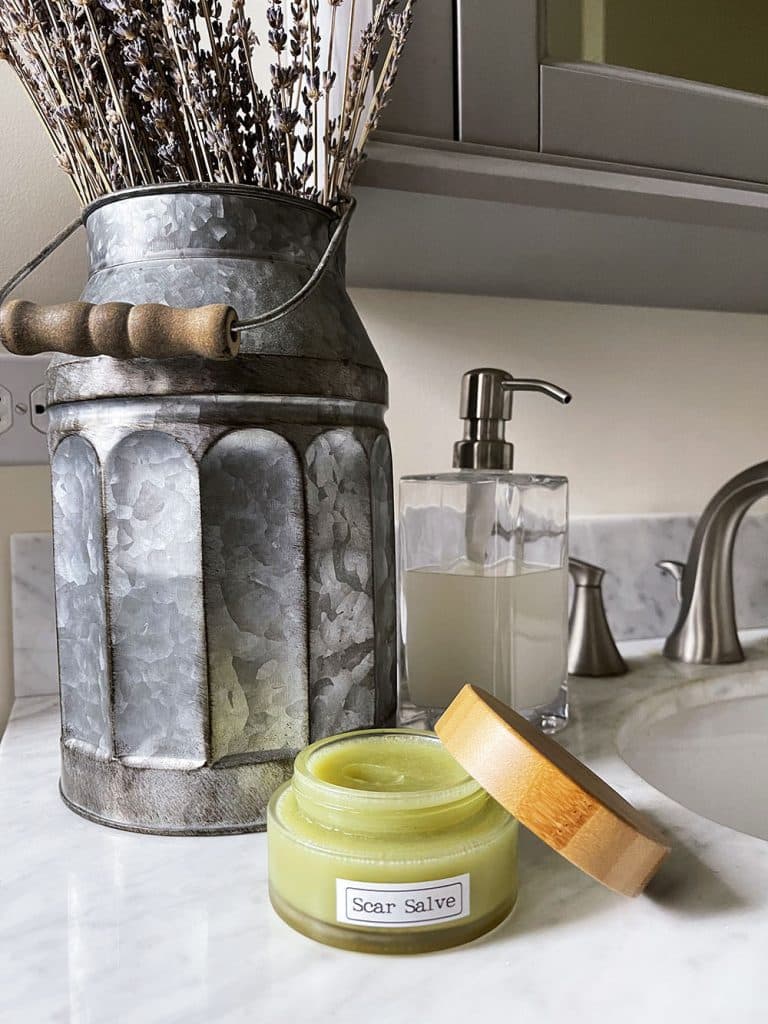
After pouring the salve into its jar, I still had a bit left in the beaker, so I smeared the remaining product on my face, hands, arms and feet. An abrasion on my wrist started looking better almost immediately. It even worked to soften up my funky hobbit-feet, which get pretty gnarly every summer, thanks to my stubborn aversion to shoes.
Despite the title, this is not just a scar salve; its more of an “everything” salve ♥
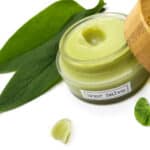
Scar Salve w/Gotu Kola & Comfrey
5 Stars 4 Stars 3 Stars 2 Stars 1 Star
No reviews
Ingredients
40 g tallow, gotu kola infused
8 g cera bellina wax pastilles
30 g jojoba oil, comfrey infused
14 g squalane, comfrey infused
8 g raw honey, comfrey infused
5 drops lavender essential oil
10 drops helichrysum essential oil
10 drops frankincense essential oil
Instructions
- Using double boiler (or other gentle heat source), heat tallow and cera bellina wax until liquified. You should not see any traces of wax pastilles in the oil.
- Add jojoba, squalane oil and honey, stirring to combine until well incorporated.
- Pour the mixture into small tubs or a 4-oz mason jar.
- Allow to cool completely and set before capping to prevent condensation on the surface of the balm. If the room is warm, cool in the refrigerator to prevent crystallization.
Notes
If you live in a very warm climate, you may wish to increase the wax slightly to create a firmer salve.
I recommend glass containers for storing homemade lotions and potions. Glass doesn’t leach chemicals and it’s easier to clean/sterilize after the product is used up and you’re ready to refill.
If you do choose to use a plastic container, be aware that essential oils tend to react with plastic, so even if you can get it “clean,” your container will likely not be reusable.

